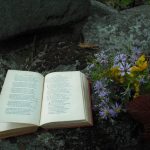September 2015 Author Earnings report is out!
Indie self-published books:
And then at the top of the graph, in various shades of blue, we have indie self-published books. For simplicity, in this series of charts, we’ve included uncategorized single-author-publishers (who are basically all unconfirmed, low-selling indies) in the indie category.
In 2015, we began tracking in our reports which indie books had ISBNs. And which didn’t — and therefore were part of the no-ISBN publishing “shadow industry,” a burgeoning market sector that remains completely invisible to Nielsen, Bowker, the AAP, or any of the other traditional providers of publishing-industry statistics.
The 2015 market share of “shadow industry” indie ebooks is shown in midnight blue at the top of the latter 3 bars of the chart, while ISBN-bearing indie ebooks are shown in a lighter shade of blue right beneath. Together, they reveal a jaw-dropping fact.
Indie ebooks without ISBNs have grown from 30% of all Kindle ebooks purchased in January 2015 to now account for 37% of all Kindle ebooks being purchased in September.
When indie ebooks that do have ISBNs are included, then indie self-published books, which made up 36% of all Kindle ebooks purchased in February 2014, now make up 42% of all Kindle ebooks being purchased on Amazon right now.
So what’s happening? Basically, the jump in traditionally published ebook prices is strangling that end of the market. I highly recommend reading the whole report.





Comments
2 responses to “In the Shadows”
More and more, it’s looking like that publishing exec who told the WSJ that readers don’t care about the cost of books is talking out of his lower orifice.
I’m not really surprised that ebooks by indie continue to do better. Indies aren’t vested in paper books like traditional publishing is.
My paper sales are a fraction of my ebook sales. I don’t think paper is going away, but I do think that most people who read voraciously prefer ebooks.